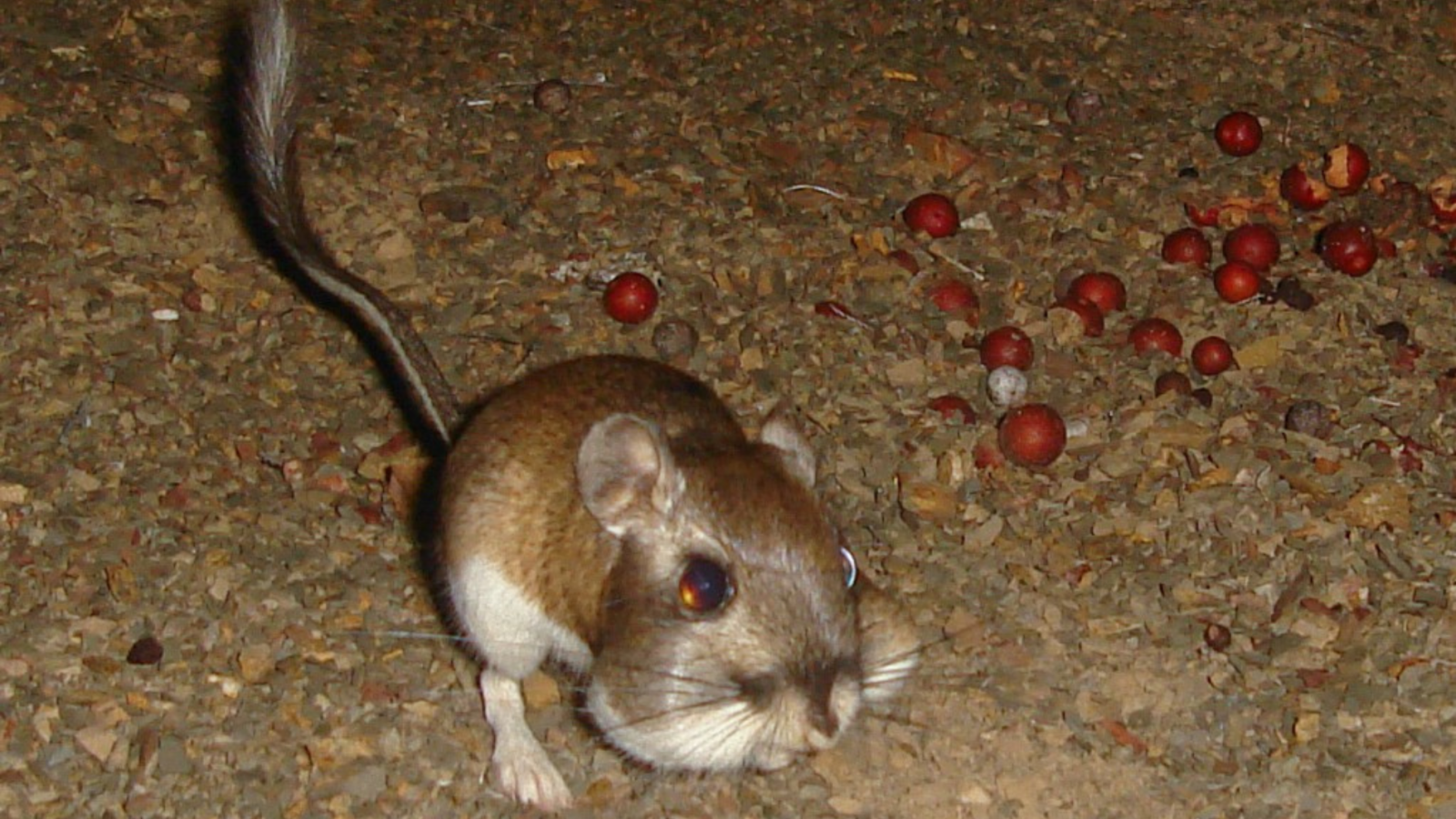The excitement was palpable recently as a group of UC Santa Cruz researchers and Midpen biologists gathered in Sierra Azul Open Space Preserve before dawn. All hopes were focused on finding an elusive giant in the ecological community: the Santa Cruz kangaroo rat (Dipodomys venustus venustus).
Although small in stature, and neither a kangaroo nor a rat, these rodents are more closely related to chipmunks and are a keystone species due to their outsized effects on other plants and animals in their ecosystem. Kangaroo rats prefer sandy soil where they can easily burrow and bury seeds for a future meal, particularly from manzanita plants. The seeds are then protected in this fire-prone environment, and those that are not eaten help the plants regenerate.
Before their recent discovery in Sierra Azul Preserve by independent biologist and Midpen partner Ken Hickman, they had not been documented in Santa Clara County since 1947. For the past 35 years, Santa Cruz kangaroo rats were known to exist only in a small pocket of sand hills near Felton – and nowhere else on Earth. Finding them in Sierra Azul again gives hope for their long-term survival and raises questions that this new research aims to answer about their population and potential listing as an endangered species.
“The environmental restoration of the Mount Umunhum summit and care of other open space areas within Sierra Azul have revealed several surprising and reassuring discoveries of rare wildlife species that are really exciting. Now, we are working to understand and care for them and their habitats into the future,” said Midpen Biologist Matt Sharp Chaney.
After an hour of peering into live-capture traps, baited with sterile nuts and filled with cotton fluff for warmth and comfort, Midpen biologist Matt Sharp Chaney saw two large dark eyes peering back. The team carefully removed the kangaroo rat and measured its ears, large hind feet and impressively long tail, and took a DNA sample before setting it free. After the first two weeks of trapping, four individual kangaroo rats had been identified. The research is expected to continue into 2025.
Nearby in the same preserve, another team of Midpen staff was installing custom-made nesting boxes for purple martins high up on predator-safe poles. Before these large swallows were discovered during Mount Umunhum's restoration, many biologists believed these birds had disappeared entirely from Santa Clara County. The western purple martin (Progne subis arboricola) has iridescent purple feathers and a call that sounds like the Star Wars character R2-D2. They migrate into our area in early spring to nest and raise their young.
“We’re anxiously watching to see if the purple martins in Sierra Azul Preserve successfully hatch chicks in the new nesting boxes that Midpen staff carefully designed and installed just for them,” explained Midpen Biologist Karine Tokatlian, who leads the project.
If you visit the Mount Umunhum area of Sierra Azul this summer, remember to look up and listen for these charismatic birds, and marvel at the wildlife discoveries that protected and cared-for public lands can reveal and support.
Learn more about kangaroo rats at openspace.org/kangaroo-rat or about purple martins at openspace.org/purple-martin.

